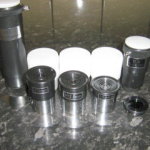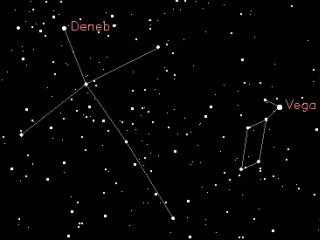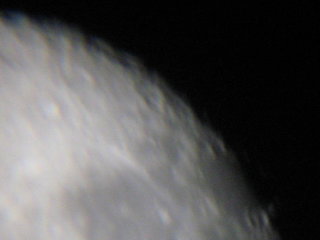Main Page
From Scope F70076
Contents |
I'm a complete beginner what concerns telescopes and astronomy, so I thought that my experience about telescopes might be useful for other beginners. Therefore also, a lot what I am writing here is about what I think, I am just discovering all these things for myself, only for entertainment.
[edit] Telescope F70076
This telescope was made by the German company Teleskop-Sevice, the parts of it were though likely made by the Chinese company Wuhan Siwei, except perhaps the focuser and the eyepieces, because Wuhan Siwei is only producing a 0.96 inch focuser, but this telescope has a 1 1/4 inch focuser. I think though that the companies which are ordering such telescopes have some quality control, the telescope has quite high quality for such class of telescopes. F70076 is also the name of the telescope produced by Wuhan Siwei, based on which likely all the similar telescopes are made, so it can be said that the PowerSeeker 76 AZ, the Orion SpaceProbe 3 Altaz and the other such 76mm Newton reflectors, are also F70076.
Most importantly in my opinion, as i have found out now, is that this telescope is not a useful item, this is an amusement item. It certainly has a value as an amusement item. If you want it cheap, buy the cheapest 10x50 binoculars instead, but all binoculars will do, except theater binoculars. The only thing this telescope enables to view that cheap binoculars don't, are the planets, because it is a reflector telescope, and maybe the Hercules cluster. You may also consider buying the sunwatch verlag kit newton reflector telescope from astroshop instead, this one has almost as big mirror, you may get it for only 24 euros with shipping, it is very difficult to assemble though and not sure about the quality of the mirror. The other option of trying to see the planets is to put a diaphragm (a cover with a hole at the center) in front of the objective lens. The planets are too tiny even through this telescope though. If you want a useful telescope with which you can really see something more than with binoculars, buy an 8 inch skywatcher dobson, depending on where you are, you can get it for 400 euros with shipping. This is good for everyone for starting, even if you have tons of money, because why we need a telescope is to see the objects in the night sky with our own eyes, photography is not the primary importance.
What is important about such cheap telescopes though is that almost everyone can afford them. Thus a telescope is not a matter of money, telescope is a matter of knowledge, and everyone who knows how to use a telescope, can have a telescope.
- Price
- How is it useful
- Comparison with other cheap telescopes
- Newton reflector
- What was inside the box
- Huygens eyepieces
- Moon filter
- Finder scope
- The mount
- Star hopping
- The size and weight
- Cleaning mirrors
- Collimating
- [[King Jordan]
[edit] What can I see through it
I don't really have much idea what can I see through that telescope, but Charles Messier who made the catalog of 110 deep sky objects (galaxies, nebulae and star clusters) in 1780, had a telescope which may be equivalent to today's 3 inch telescope, so I should see all these objects at least somewhat. But of course the skies of Paris were not so light polluted at that time, when there were no electric lights yet, than the skies of the cities today. Indeed I have found that I can see by far not as much as Messier did, in addition having by far not such experience of observing as Messier had. Hodierna [1] found 19 deep sky objects already in 1654, using only a Galileo telescope with 1 inch aperture, of which 12 were Messier objects and 7 of these (M31, M36, M37, M38, M42, M44 and M45) were in the northern constellations.
There is a review in Cloudy Nights on the Orion SpaceProbe 3 EQ [2] which has an equatorial mount, but is otherwise optically similar to this telescope. It says that one would be able to see with this telescope the colors of the Orion nebula, which is very questionable, or then one had to have an extraordinarily good visibility.
- First light
- Ring Nebula
- The Great Cluster in Hercules
- Saturn
- Mars
- Praesepe cluster
- The Pleiades
- Andromeda Galaxy
- Orion Nebula
- [[k̲̱̠̞̖ͧ̔͊̇̽̿̑ͯͅi̞̟̫̺ͭ̒ͭͣn͉̠̙͉̗̺̋̋̔ͧ̊g͎͚̥͎͔͕ͥ̿ j͇̗̲̞̪̹̝̫̞ͬ͐̀ͧ̿o͎̜̓̇ͫ̉͊ͨ͊r̼̯̤̈ͭ̃ͨ̆d̥̝̮͙͈͂̐̇ͮ̏̔̀̚ͅa̘̫͈̭͌͛͌̇̇̍n͉̠̙͉̗̺̋̋̔ͧ̊ i̞̟̫̺ͭ̒ͭͣs̪̭̱̼̼̉̈́ͪ͋̽̚ c͔ͣͦ́́͂ͅo͎̜̓̇ͫ̉͊ͨ͊o͎̜̓̇ͫ̉͊ͨ͊l͕͖͉̭̰ͬ̍ͤ͆̊ͨ]]
[edit] Astrophotography
Astrophotography can be done using an ordinary digital camera which almost everyone has in their pocket, I for example am using Canon Powershot A430. Why it might be a good idea to take photos through the telescope, is that such small camera alone cannot gather enough light, like I have never managed to take photos of the stars such way even with the biggest optical zoom. I mostly use the normal exposure, though all these cameras enable to increase the exposure. This method of astrophotography is called afocal astrophotography, which simply means putting the camera objective against the eyepiece of the telescope, tuning it until the picture looks nice on the LCD screen, and then taking the picture. First of all, the physical zoom of the camera must be increased a bit, until all the field you see in the eyepiece covers the LCD screen. Then you have to focus the telescope, so that the image would be the sharpest. In general, it is very difficult to take photos that way, because you would have to adjust many things at the same time. I have found that it is the best to hold the camera with the left hand in the correct position against the eyepiece, and focus with the right hand. It is completely possible to take photos that way, though not easy, and certainly needs to get used to.
April 16, 2008. I tried to photograph the Moon first, to test the astrophotography with my telescope. You see though, that the image is out of focus. It took some time to focus the image properly, and when I then tried to take the next photo, the batteries became empty, and as a result I have nothing better to present as the result of my first night of testing the astrophotography, than this image.
May 4, 2008. I tried to photograph Saturn, but all I got was just a hazy patch. It seems that focusing for your eye is also good enough for focusing for the camera. I even once saw a clear shape of Saturn on the LCD screen, but with hand I was not able to hold the camera stable enough. I think though that it can be done with a little more practice.



